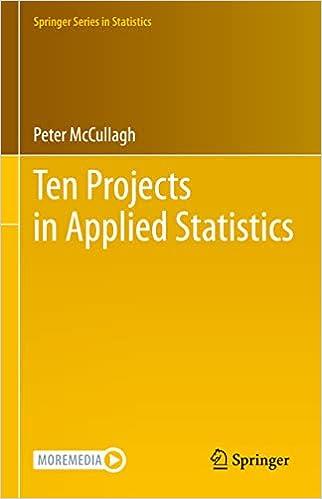REML, or residual maximum likelihood, is the standard method for the estimation of variance components: see Chap.
Question:
REML, or residual maximum likelihood, is the standard method for the estimation of variance components: see Chap. 18 for details. Both regress () and lmer () allow other options, but both use REML as the default. However, lmer () constrains the coefficients to be positive, whereas regress () allows negative coefficients unless otherwise requested. If \(\hat{\sigma}_{1}^{2}>0\), both functions should report the same values for all coefficients; otherwise if the unconstrained maximum occurs at a negative value, differences are to be expected, both in the fitted variance components and in the regression coefficients.
For regular problems in which the null model is not a boundary subset, the null distribution of the conventional \(\log\) likelihood ratio statistic is distributed asymptotically as \(\chi_{1}^{2}\). Assuming that the unconstrained version is regular with fitted coefficients approximately unbiased, what is the asymptotic distribution of the log likelihood ratio statistic for the constrained problem? Using this null distribution, report the tail \(p\)-value for the hypothesis of zero rat variance.
Step by Step Answer:






